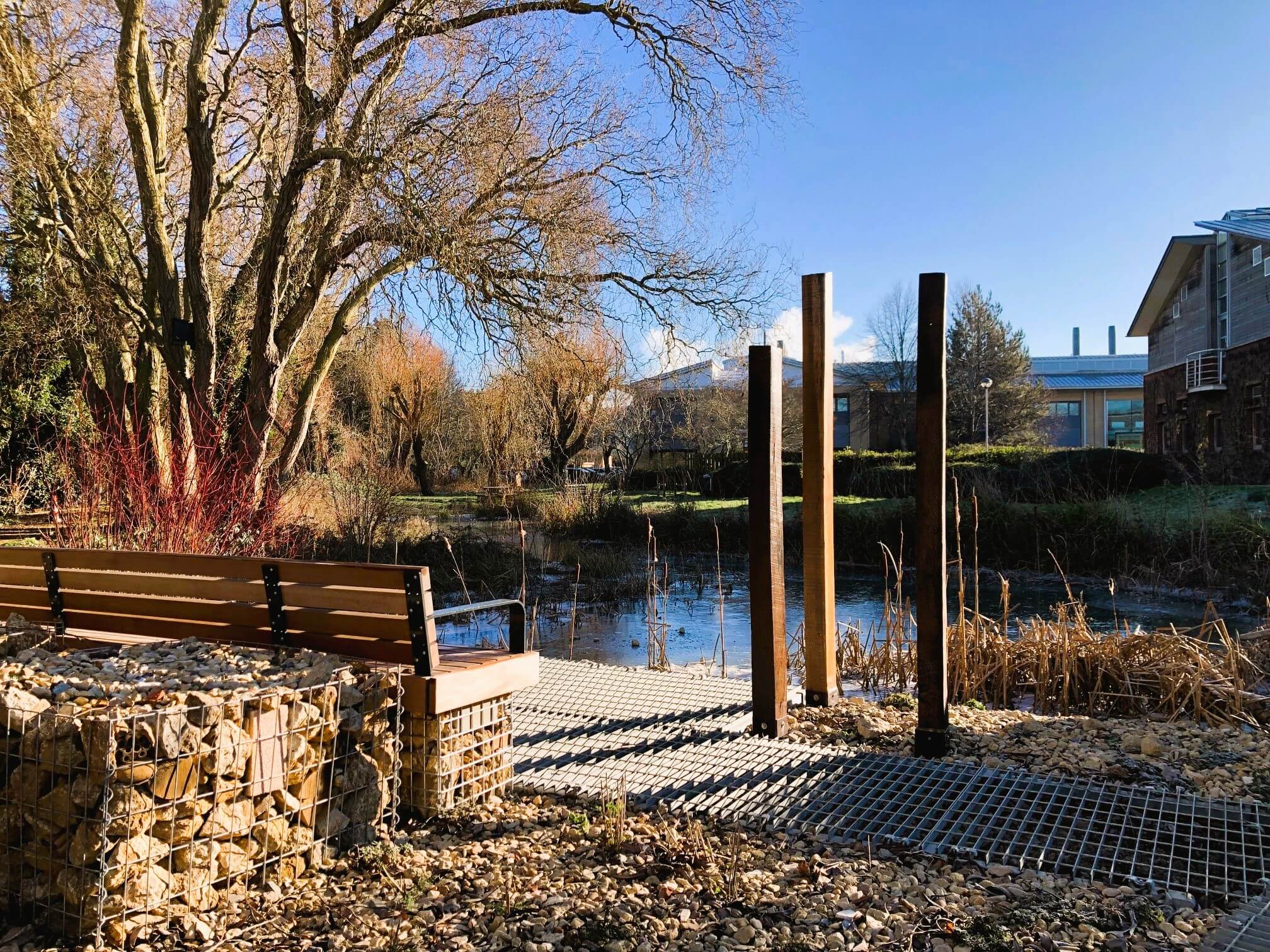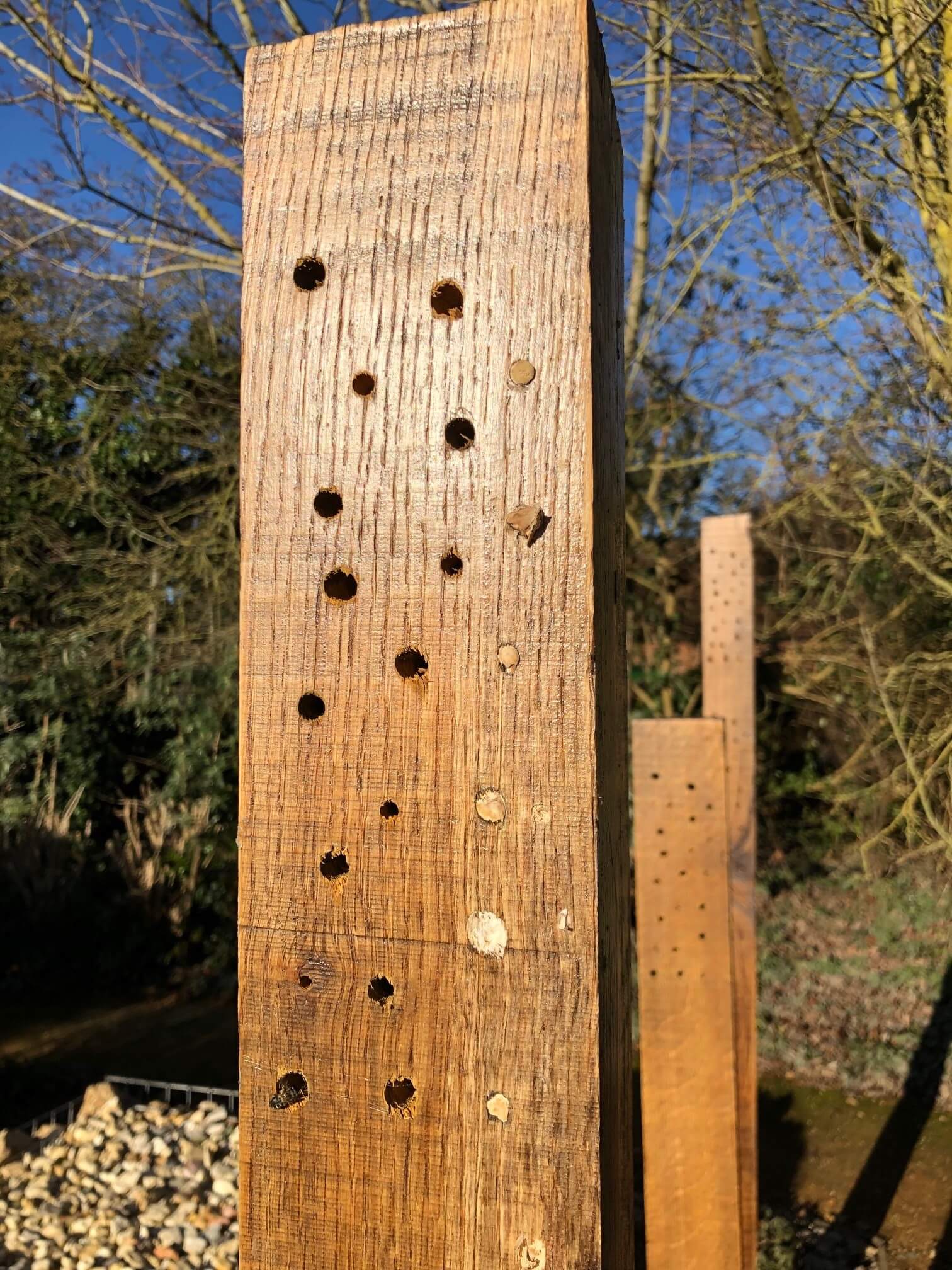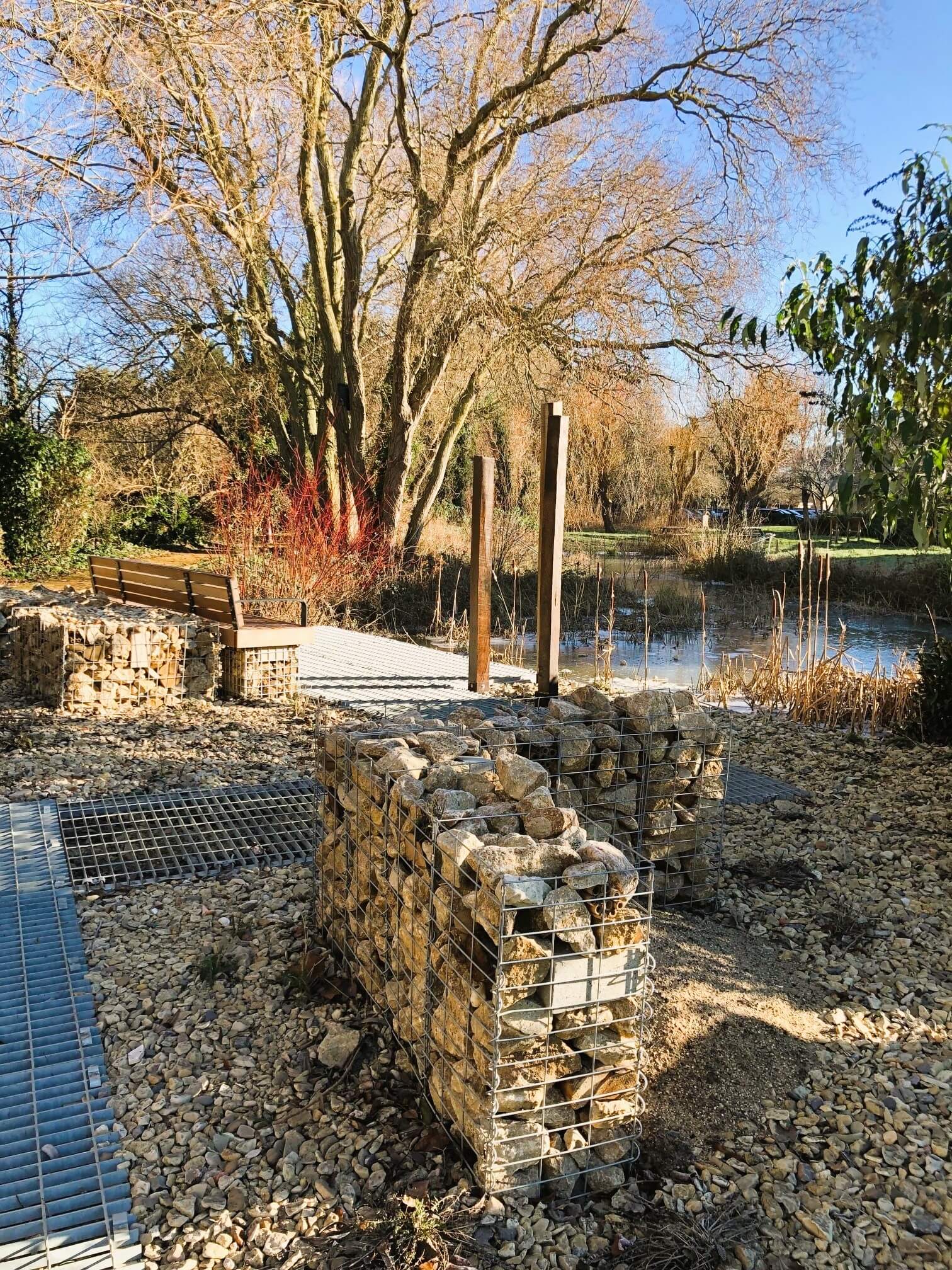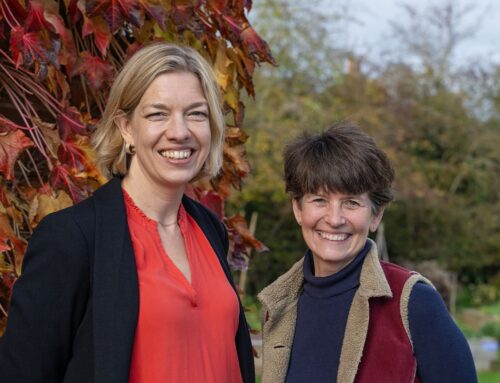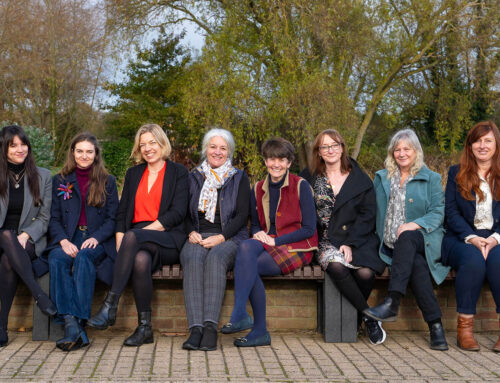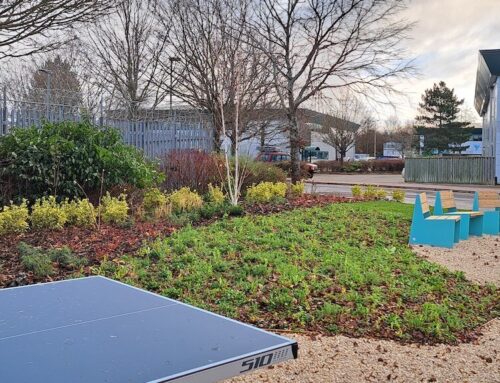Creating Brownfield Gardens at Milton Park
By: Emma Higgins, Landscape Architect and Veronica Flemming, Director
As Landscape Architects, we are acutely aware of the need to address the big issues challenging our world, such as the sustainable use of materials, biodiversity loss and designing for climate resilience, which we endeavour to achieve through our designs. However, regardless of how well specified the materials, or well-crafted the design, more often than not, a proposed commercial landscape will require the use of new paving and the importing of topsoil, all of which have a heavy carbon footprint.
Inspired and guided by John Little of the Grass Roof Co, and working alongside the Facilities Manager at CBRE, ASA set out to create a Brownfield Garden, utilising a pioneering approach to landscape design: a first of its kind at Milton Park. From the beginning, the new landscape looked to consider the impact of its materials, baking in biodiversity and climate-resilience from the outset by utilising recycled construction waste in its design.
‘Brownfield’ sites, are often only seen as wasteland or soon to be development land targeted for housebuilding1. However, they have long been recognised as incredibly biodiverse places and can support an extremely rich diversity of wildflowers and animals. ‘Indeed the invertebrate rarity and diversity of some brownfield sites is only equalled by that of some ancient woodlands2’ This is an incredible achievement when some brownfield sites have only been established for a few decades, in comparison to the many hundreds of years for a woodland to mature.
In recreating some of the diversity of habitats that contribute to the success of brownfield sites, within the setting of a ‘designed landscape,’ we had hoped to create an attractive, biodiverse place, without the carbon footprint (or expense) of a more traditional approach.
Sustainable Sourcing:
Through reusing onsite construction waste of crushed concrete and bricks as a planting substrate, we avoided the need for imported topsoil, instead re-creating the low nutrient substrates that usually support our most diverse wildflower communities. Habitat variety was introduced through interweaving sand and soil piles, drilled reclaimed wooden posts and logs as well as re-used bricks, to create an aesthetically pleasing ‘brownfield’ site that provides unique niches for wildlife. New materials brought onto site were selected to be long-lasting industrial materials ie. Galvanised steel gabion baskets and walkways. These helped to reduce future maintenance and contributed to habitat variety, whilst allowing occupiers to use and enjoy the space created.
Biodiversity and Native Planting:
Located in a quiet area of Milton Park, the garden had previously been block planted with non-native shrubs, adjacent to a small ‘lagoon’ and streamway. The low nutrient level of the crushed and free-draining substrates enabled us to plant diverse native plants and their cultivars usually found on chalk downland. The low nutrient levels prevent fast growing species from dominating and therefore support a higher plant diversity. The planting was carried out in November 2023, as a mixture of seeding and plug planting (9cm pots).
In addition, we integrated non-native low nutrient loving plants and native marginal planting to the lagoon, that will extend the season for both pollinators and public alike.
Within a few weeks of implementation, we were encouraged to see investigation and up-take by solitary bees of the upright wooden posts that had been installed as well as fungi (a genus not well represented within commercial landscapes) taking hold within the drilled holes.
Photo of fungi and emerging bee, in reclaimed wooden oak posts.
Designing for Climate Resilience:
Located adjacent to one of the lagoons which form part of a wider attenuation system across Milton Park, the resilience of the Brownfield Garden was put to the test shortly after installation. In early January 2024, following one of the warmest and wettest winters on record3, the adjacent lagoon flooded the surrounding area, including the Brownfield Garden. Despite being fully submerged, due to the free-draining nature of the substrate, the area quickly drained and early results seem to show that plug plants have not been affected. However, we will have to see how well the seed-germination occurs in spring to fully understand the effects of the flooding, particularly with the potential input of alluvial silt into the installed substrates.
The planting mixture was designed to be drought tolerant, having selected species that thrive in free draining chalkland environment, and its performance over the summer months will be reviewed over time.
This installation is a great example of sustainable landscape design and how recycled materials can be used to integrate structure within a landscape to benefit biodiversity. Not only is this a sustainable project in its delivery and installation but also the on-going maintenance and carbon inputs are greatly reduced due to the substrates and materials used. We have already gained a positive response from occupiers of the park and given the success of the scheme we shall be looking to replicate the design principles across the Estate.”
Peter King, Associate Director – Facilities Manager – Milton Park
We hope that this experimental Brownfield Garden within a commercial landscape setting will help us to understand what is possible in delivering low-cost landscapes that seek to integrate the positive features of brownfields sites; namely low nutrient, highly variable environments that deliver scalable sustainable, biodiverse and climate resilient landscapes.
Photo of landscape after heavy rainfall in January 2024.
If you want to find out more, feel free to contact us for some informal advice about your project.
1https://cdn.buglife.org.uk/2019/08/Planning-for-Brownfield-Biodiversity.pdf 2https://www.gov.uk/government/news/build-on-brownfield-now-gove-tells-underperforming-councils#:~:text=Planning%20authorities%20in%20England’s%2020,families%20to%20find%20a%20home. 3https://climate.copernicus.eu/copernicus-2024-world-experienced-warmest-january-record

